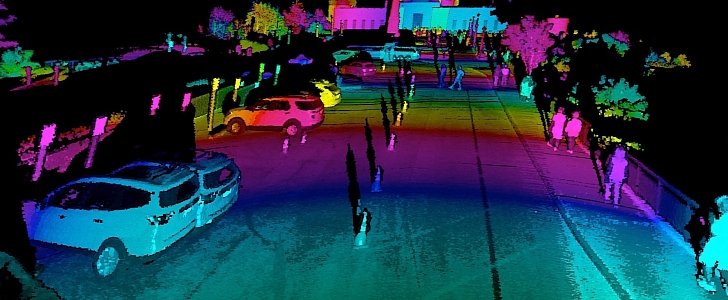LIDAR is one of the tools without which autonomous cars will not exist. The technology is the eyes and ears of self-driving automobiles, currently being research across the auto industry and beyond.
Important as it may be, LIDAR does not make money for carmakers, at least not today, so it’s not exactly something you would expect to see being shown at a major auto event, in a booth devoid of any cars.
Earlier this month, before the Los Angeles Auto Show, kicked off, Swedish automaker Volvo said it decided not to bring any vehicles to the event, but show something else instead. That something else is, of course, LIDAR.
And not just any LIDAR, but one that surpasses anything the competition has to throw at it.
The system was developed together with start-up Luminar, a company in which Volvo invested earlier this year. It is supposed to detect an object at distances of up to 250 meters (820 feet), much better than the current range of similar systems used in the auto industry.
What’s more impressive, as per Volvo’s claims, is that the system can detect human poses, but also the individual limbs of the people it sees. Needless to say, this is an important attribute of car meant to operate on its own in very crowded cities.
To make all those stepping into its booth aware of what all the above actually means, Volvo has set up a virtual reality station that places people inside a makeshift reality and the 360c concept it showed earlier this year.
The carmaker did not say how advanced the research into the new LIDAR system is, nor when we can expect to see a working prototype.
It did say however via Luminar’s founder, Austin Russell, that the team is “moving at an impressive pace to solve some of the most advanced problems in the development of autonomous driving.”
Earlier this month, before the Los Angeles Auto Show, kicked off, Swedish automaker Volvo said it decided not to bring any vehicles to the event, but show something else instead. That something else is, of course, LIDAR.
And not just any LIDAR, but one that surpasses anything the competition has to throw at it.
The system was developed together with start-up Luminar, a company in which Volvo invested earlier this year. It is supposed to detect an object at distances of up to 250 meters (820 feet), much better than the current range of similar systems used in the auto industry.
What’s more impressive, as per Volvo’s claims, is that the system can detect human poses, but also the individual limbs of the people it sees. Needless to say, this is an important attribute of car meant to operate on its own in very crowded cities.
To make all those stepping into its booth aware of what all the above actually means, Volvo has set up a virtual reality station that places people inside a makeshift reality and the 360c concept it showed earlier this year.
The carmaker did not say how advanced the research into the new LIDAR system is, nor when we can expect to see a working prototype.
It did say however via Luminar’s founder, Austin Russell, that the team is “moving at an impressive pace to solve some of the most advanced problems in the development of autonomous driving.”





